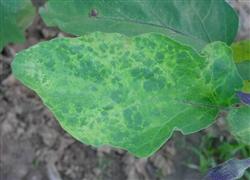Daily management of planting Dutch beans
Dutch beans must have been eaten, but you may not know what they are called. Dutch beans are ripe in pods, similar to peas and edamame beans. But unlike them, the pods of Dutch beans are edible without breaking them out. Planting Dutch beans is more common in the south of China, and its strong adaptability can be planted in many places, but it is only a matter of quality and quality. So how to manage it on a daily basis when growing Dutch beans? Let's take a look at it with the editor.

1. Fertilizer and water management
Controlling the fertilizer and water of Dutch bean is the key to successful planting. Dutch bean is a kind of cool crop, which needs a certain amount of water in the process of plant growth, but it is not resistant to waterlogging and can not grow under natural drought. Therefore, while providing the necessary water, we should also ensure that there is no stagnant water in the soil, otherwise too much water will rot the roots of the plant, weaken the respiration of the roots, and affect the intake and transport of nutrients. And in the process of planting, topdressing should be applied at least three times according to the actual situation, and urea can be used to ensure the growth of the plant.
2. Plant adjustment
Reasonable shaping and pruning of the plant in order to effectively ensure the success of planting, after the seed germination, it is necessary to carry out a work of ploughing and weeding. Be careful not to hurt the roots of the plant, enhance the water and moisture conservation of the soil, and cut off the excess branches at the right time to ensure the growth and podding of the main vine. When the leaves grow out of the vine, the plant is treated with scaffolding to enhance the nutrient transport within the plant and provide sufficient nutrients. Proper shaping and pruning can reduce plant nutrient consumption, enhance inter-garden permeability and accelerate plant growth.
3. Prevention and control of diseases
Disease control is the most important condition for all crops, and the same is true for Dutch beans. Diseases will cause great harm to the growth of Dutch beans, such as rust, downy mildew and so on. It is necessary to strengthen the daily management of the vegetable garden and carry out regular disinfection to eliminate the hidden pathogens in the vegetable garden. Suspected diseases found should be checked in time, and then corresponding control measures should be carried out according to the specific diseases. Metalaxyl wettable powder and other chemicals can usually be used to control the vegetable garden for at least two years. Remove the disease and residual branches in the hospital.
4. Timely harvest
Dutch beans are more than a year-old crop, and their economic benefits can be gradually improved as they continue to bear pods. Therefore, in order to follow up the growth of pods, we should timely remove the ripe Dutch beans, as well as some diseased beans and weak pods. It can not only provide enough growth space, but also prevent the old pods from competing for nutrients with the new pods and affect the growth and development of the new pods. The general harvest time is about 9 days after the plant blossoms, when we can see that the pods have fully grown, but the seeds are not yet, so it is the best time to eat.
The above is the daily management method of planting Dutch beans, in fact, the daily management is some of the problems that we do not pay careful attention to in the process of planting. To deal with it in detail, it is these problems that have not been noticed that are the most important aspects that need to be done well in the planting process. I hope you must pay more attention to some details in the planting process, so as to achieve effective planting benefits.
- Prev

Control and Management techniques of Diseases and insect pests in eggplant in January
Eggplant, which is raised in early spring, mainly controls soil-borne diseases such as quenching, blight and Sclerotinia sclerotiorum. Seedbed soil disinfection, using 50 kg seedbed soil plus 20 g 68% Jinlei water dispersible granules and 10 ml 2.5% suspending agent can be sifted and mixed with a nutrition bowl or laid on the seedling bed. Spray 0.1%-0.2% potassium dihydrogen phosphate at seedling stage.
- Next

Causes and control methods of rotten sticks of Lentinus edodes
Causes and control methods of rotten sticks of Lentinus edodes
Related
- Where is it suitable to grow horseradish in China? it is expected to see the middle altitude horseradish in Alishan.
- How to prevent tomato virus disease reasonably? (Control methods included)
- Many people like to plant towel gourd on the balcony. What are the main points of this method and management?
- What crops can chili peppers be mixed with?
- Fertilization techniques and matters needing attention in Tomato
- What are the grafting techniques for peach seedlings in spring?
- Harm and control methods of root swelling disease of Chinese cabbage
- What are the pests of sweet potatoes? How to prevent and cure it?
- Symptoms, causes and Control methods of navel Rot in Tomato
- The cause of "Cucumber rotten bibcock" in Farmers' planting Cucumber and its Control Plan

